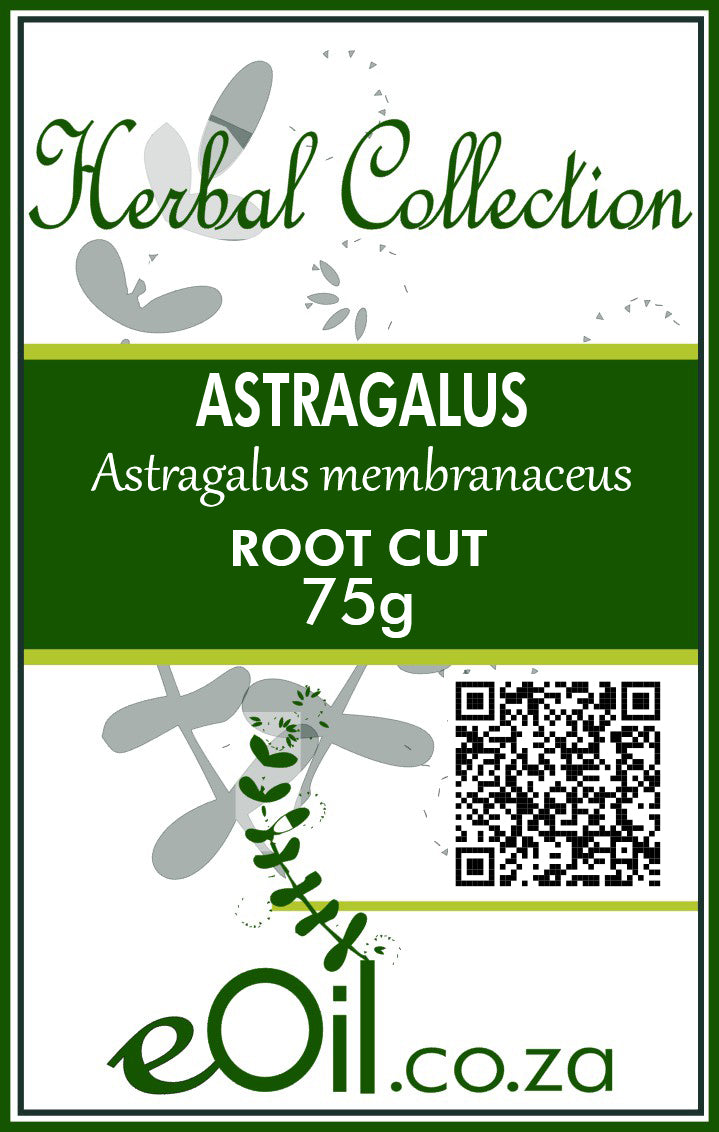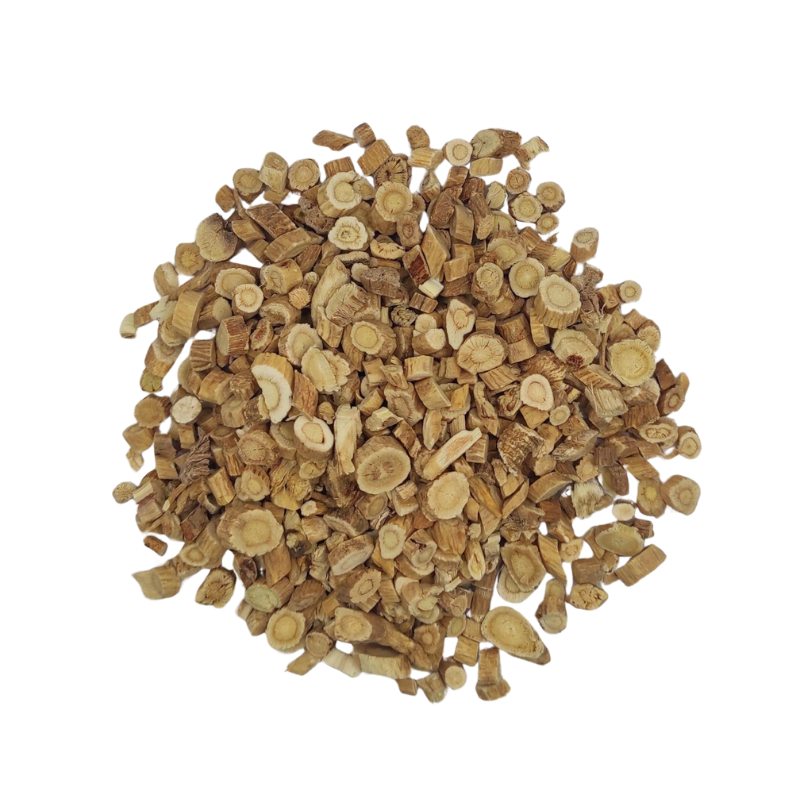Astragalus Root Cut Dried - Herbal Collection
Astragalus Root Cut Dried - Herbal Collection - 75 GR is backordered and will ship as soon as it is back in stock.
Description
Description
This is the traditional, raw form of one of Traditional Chinese Medicine's (TCM) most prized herbs.
Our Astragalus Root (Huang Qi) is the "go-to" herb for building deep, long-term immunity.
This is a "tonic" herb, meaning it's not for when you get sick, but rather a daily builder to create a stronger, more resilient defense system over time. As a powerful adaptogen and "Qi Tonic," it also builds vital energy and helps the body manage stress.
How to Use (DIY): This is a tough, woody root, so it must be simmered (not just steeped) to extract its benefits.
As a Decoction (Tea): This is the classic method. Add 1-2 tablespoons of the root to 2 cups of water, bring to a boil, then simmer (covered) for 15-20 minutes. Strain and drink.
For Soups & Stews: This is its most famous use! Add 3-4 root pieces directly to your soup, broth, or stew as it simmers. The pieces will infuse the entire pot with their benefits. (Remove the woody pieces before serving).
DIY Tincture: This is the perfect raw ingredient for making your own potent, home-made tincture.
Important Cautions:
This is a preventative tonic. It is traditionally not used during an acute fever or the initial onset of a cold or flu.
Consult a healthcare professional before use if you are pregnant, breastfeeding, or have an auto-immune condition.
IDENTIFICATION
Astragalus tisane, also known as Huang Qi tea, is a herbal infusion made from the root of Astragalus membranaceus. This ancient herb has been a cornerstone of Traditional Chinese Medicine for centuries, valued for its numerous health benefits and adaptogenic properties.
Botanical Information
Scientific Name: Astragalus membranaceus
Family: Fabaceae (Leguminosae)
Common Names: Huang Qi, Milk Vetch Root
INCI Name: ASTRAGALUS MEMBRANACEUS ROOT EXTRACT
CAS Number: 94166-93-5
Key Constituents
- Polysaccharides (astragalans)
- Saponins (astragalosides)
- Flavonoids
- Amino acids
- Trace minerals
TRADITIONALLY USED FOR
Traditional Uses
In Traditional Chinese Medicine, Astragalus tisane has been used to:
- Strengthen the immune system
- Increase vitality and energy
- Support cardiovascular health
- Aid in stress management
- Promote longevity
Preparation Method
To prepare Astragalus tisane:
- Use 3-5 grams of dried Astragalus root per cup of water.
- Bring water to a boil in a pot.
- Add the Astragalus root and reduce heat to a simmer.
- Allow to simmer for 10-15 minutes.
- Strain and serve.
For a stronger decoction, simmer for up to 30 minutes.
Taste Profile
Astragalus tisane has a mild, sweet flavor with earthy undertones. It's often described as pleasant and easy to drink.
Potential Health Benefits
- Immune Support: Astragalus may help boost the immune system, potentially reducing the frequency and severity of colds and flu
- Adaptogenic Effects: As an adaptogen, it may help the body cope with physical and emotional stress
- Cardiovascular Health: Some studies suggest it may support heart function and improve circulation
- Antioxidant Properties: Astragalus contains compounds that may help protect cells from oxidative stress
- Potential Anti-Diabetic Effects: Some research indicates it may help in blood sugar management, though more studies are needed
Recommended Usage
For general health maintenance, drinking 1-2 cups of Astragalus tisane daily is often recommended. However, it's best to consult with a healthcare professional for personalized advice.
Safety Considerations
- Generally considered safe when used as directed.
- Avoid use during pregnancy and breastfeeding due to insufficient safety data.
- May interact with immunosuppressant medications and drugs that lower blood sugar.
- Not recommended for individuals with autoimmune disorders without professional guidance.
Combining with Other Herbs
Astragalus tisane can be combined with other herbs for enhanced effects:
- With Echinacea for immune support
- With Ginseng for energy
- With Licorice root for digestive health
Storage
Store dried Astragalus root in an airtight container in a cool, dry place away from direct sunlight. Properly stored, it can maintain its potency for up to two years.
Conclusion
Astragalus tisane offers a gentle yet potent way to incorporate this revered herb into your wellness routine.
Its rich history in traditional medicine, combined with emerging scientific research, makes it a valuable addition to a holistic approach to health.
As with any herbal remedy, it's important to use Astragalus tisane responsibly and consult with a qualified healthcare practitioner, especially when dealing with chronic conditions or using it alongside other medications.
CAUTION
Store in a cool, dry place, away from light. Keep tightly closed, away from the reach of Children and pets.
Do not exceed the daily dose.
This product is not intended to prevent or cure any form of illness or disease.
If you are pregnant or nursing ; If you have a medical condition or are in the course of medical treatment ; If you are programmed for theater/operation in the near future, please consult your healthcare practitioner before using this product.
This product cannot replace a varied and balanced diet and a healthy lifestyle.
This product has not been evaluated by the SAHPRA for its quality, safety or intended use.
For More Information please check our General Safety Herbal products Page

Astragalus Root Cut Dried - Herbal Collection - 75 GR is backordered and will ship as soon as it is back in stock.






